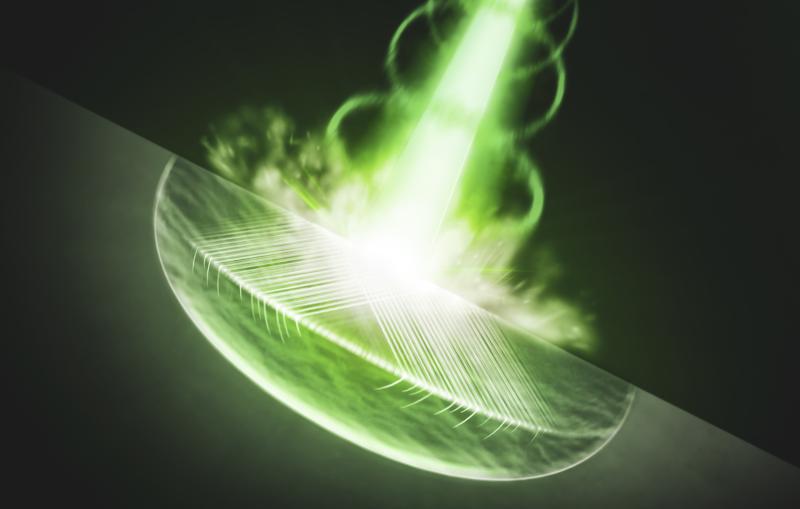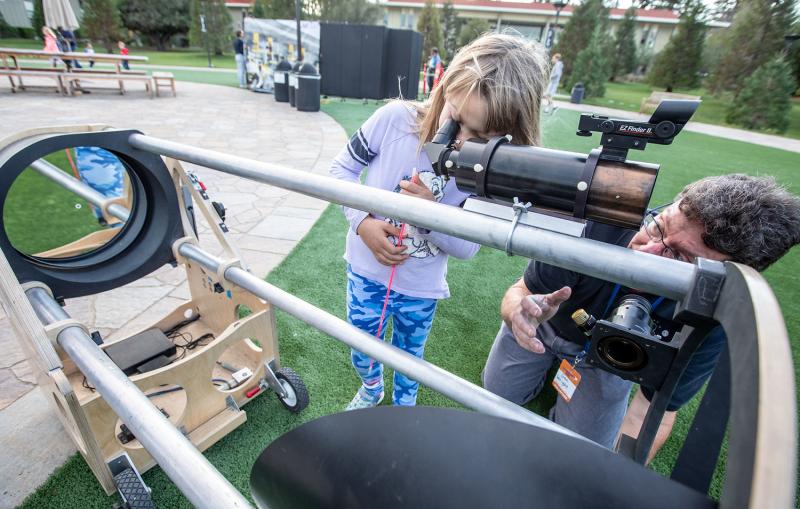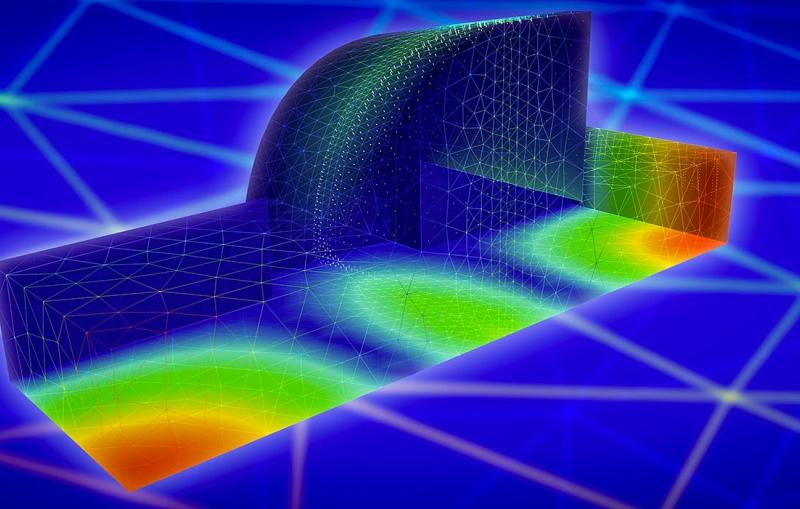Collaborations with small businesses spur progress for LCLS research at SLAC
The Small Business Innovation Research Program brings government and private industry together to develop next-generation X-ray optics for LCLS-II.
By Kimberly Hickok
As researchers at the Department of Energy's SLAC National Accelerator Laboratory prepare to take upgrades to the Linac Coherent Light Source's X-ray free-electron laser (LCLS-II) online, they are already looking to push the capabilities of X-ray free-electron lasers (XFELs) even further. A more powerful XFEL will help LCLS expand its efforts in studying catalysis, quantum materials, matter in extreme environments and other scientific goals.
But pushing LCLS-II's boundaries will take more than just boosting power. In particular, it will take new, highly specialized X-ray optics, notably mirrors and diffraction gratings that SLAC can't produce on its own. In fact, "there are now only two vendors in the world that make these, and those are in other countries," said LCLS Director of Engineering Moises Smart. Ideally, he said, "we would have a local source."
And that, said Matt Garrett, SLAC Director of Technology Transfer and Private Partnerships, is where the federally sponsored Small Business Innovation Research Program (SBIR) comes in.
Last year, DOE awarded four early-stage SBIR contracts to four small businesses that are developing the kinds of X-ray optics that a next-generation XFEL will need to work. The next round of DOE SBIR funding announcements will begin in July.
“When researchers design facilities like these, sometimes the technology hasn’t been invented yet,” says Garrett. “The researchers know what they need and they know the specs they need to hit, but someone has to invent something to make it happen, so this is an example of where we’re able to work with industry."
“Hopefully we build a long-lasting relationship between the facility and the company, because these research facilities last for decades,” said Garrett. “So it’s a win-win all around.”
Small businesses solving big problems
Although the LCLS-II project will be a significant jump in terms of X-ray power, researchers around the world want to go farther, increasing peak energies and reaching a point where they can watch different physical processes unfold at the atomic level. To reach such high levels of precision, the surfaces of meter-sized mirrors – whether flat or curved ones – must be as smooth and as perfect as possible, even down to the atomic scale.
Through the SBIR program, Utah-based American Physics and Technology LLC (APT) is working on how to create those ultra-precise surfaces using a technology called gas cluster ion beams. Dave Swenson, APT's founder and principal scientist, said the project is a natural fit for the technology, which was originally developed in the semiconductor industry for reducing device sizes on integrated circuits for next generation computer chips.
To make such accurate and smooth surfaces, APT bombards mirror surfaces with intense, focused beams of gas cluster ion beams. These beams, made up of gas clusters just a few nanometers across, allow mirror builders to etch away tiny bits of material, shaping and perfecting the surface through the many overlapping impacts of the clusters in the beam. “With the help of SLACs optical metrology group, led by May Ling Ng, we will be identifying the imperfections and then correcting the shape of the optics,” Swenson said. APT is working with Exogenesis Corp. in Boston, Rigaku Innovative Products in Michigan, and Inrad Optics in New Jersey to manufacture these innovative mirrors.
A similar challenge concerns diffraction gratings, which are used to split X-ray lasers into separate beams according to their wavelengths. Through another SBIR project, Massachusetts-based Izentis is working with LCLS's Optics and Metrology Laboratory to build high precision diffraction gratings.
Founder Alexander Bruccoleri said his company has been developing diffraction gratings for astronomy applications, but applying this technology for use in synchrotrons and X-ray lasers is a promising new direction for the company. Right now, the company is focused on testing the feasibility of using electron beam lithography to pattern high precision gratings for X-ray optics, Bruccoleri explains.
“If this works – which we are hopeful it will – then it’s likely we would build these gratings custom made for various synchrotrons around the country, including SLAC,” he said.
New ideas advance science, bolster the domestic market
Collaborations with small, domestic businesses not only broaden SLAC’s research and engineering brainpower, but also create more reliable sources for products and materials required for research while supporting the domestic economy, Smart said.
“One of the big gaps that we’ve had in the past is that we often had to rely on international suppliers for these specialized things,” Smart said. Increasing instability with the global supply chain means international suppliers are less reliable, which prevents the development of new technology within a reasonable timeline, he said. At the same time, Smart said, relying on domestic industry to support SLAC’s research eliminates the uncertainties associated with an international supply chain while also promoting domestic economic growth.
Such collaborations also bring valuable new perspectives to the lab. “SLAC exists in a mostly academic hybrid-like culture,” said Smart. “Having a relationship with these companies offers a fresh perspective on how things are done. It's a peek into another world, which has the potential to increase curiosity and spur innovation.”
Without such ideas, the technological advancements that happen at SLAC might be harder to achieve, says May Ling Ng, who co-wrote the SBIR call for proposals with colleagues from other national labs and supported her collaborators with their SBIR applications. “LCLS requires a lot of advanced engineering solutions to operate, so we want to support businesses that can come up with these advanced products for us,” said Ng, who is now head of LCLS Beam Delivery Systems Engineering.
“SLAC scientists and engineers are working at the forefront of high energy X-ray research,” said Swenson, “so it's a great honor to be able to work with them.”
Businesses interested in partnering with SLAC through the SBIR program can reach out to Matt Garrett at sbir@slac.stanford.edu with questions. The next round of DOE SBIR funding announcements will begin in July.
LCLS is a DOE Office of Science user facility.
For questions or comments, contact the SLAC Office of Communications at communications@slac.stanford.edu.
SLAC is a vibrant multiprogram laboratory that explores how the universe works at the biggest, smallest and fastest scales and invents powerful tools used by scientists around the globe. With research spanning particle physics, astrophysics and cosmology, materials, chemistry, bio- and energy sciences and scientific computing, we help solve real-world problems and advance the interests of the nation.
SLAC is operated by Stanford University for the U.S. Department of Energy’s Office of Science. The Office of Science is the single largest supporter of basic research in the physical sciences in the United States and is working to address some of the most pressing challenges of our time.






